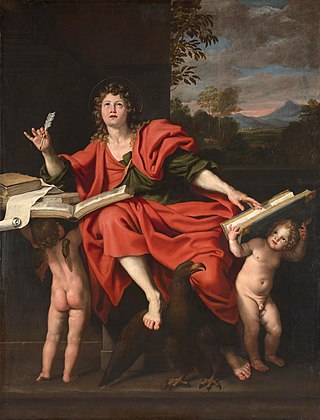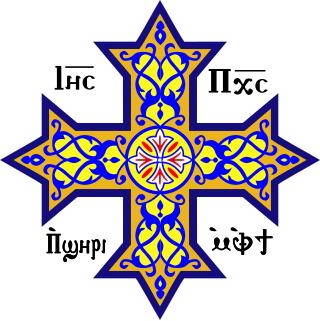Gospel originally meant the Christian message, but in the 2nd century it came to be used also for the books in which the message was reported. In this sense a gospel can be defined as a loose-knit, episodic narrative of the words and deeds of Jesus, culminating in his trial and death and concluding with various reports of his post-resurrection appearances. Modern biblical scholars are cautious of relying on the gospels uncritically, but nevertheless, they provide a good idea of the public career of Jesus, and critical study can attempt to distinguish the original ideas of Jesus from those of the later Christian authors.

The Gospel of Thomas is an extra-canonical sayings gospel. It was discovered near Nag Hammadi, Egypt, in 1945 among a group of books known as the Nag Hammadi library. Scholars speculate the works were buried in response to a letter from Bishop Athanasius declaring a strict canon of Christian scripture. Scholars have proposed dates of composition as early as 60 AD and late as 250 AD. Many scholars have seen it as evidence of the existence of a "Q source" that might have been similar in its form as a collection of sayings of Jesus, without any accounts of his deeds or his life and death, referred to as a sayings gospel.

Marcion of Sinope was a theologian in early Christianity. Marcion preached that God had sent Jesus Christ, who was distinct from the "vengeful" God (Demiurge) who had created the world. He considered himself a follower of Paul the Apostle, whom he believed to have been the only true apostle of Jesus Christ; his doctrine is called Marcionism. Marcion published the earliest record of a canon of New Testament books.
Marcionism was an early Christian dualistic belief system that originated with the teachings of Marcion of Sinope in Rome around 144 AD. Marcion was an early Christian theologian, evangelist, and an important figure in early Christianity. He was the son of a bishop of Sinope in Pontus. About the middle of the 2nd century (140–155) he traveled to Rome, where he joined the Syrian Gnostic Cerdo.

The New Testament apocrypha are a number of writings by early Christians that give accounts of Jesus and his teachings, the nature of God, or the teachings of his apostles and of their lives. Some of these writings were cited as scripture by early Christians, but since the fifth century a widespread consensus has emerged limiting the New Testament to the 27 books of the modern canon. Roman Catholic, Eastern Orthodox, and Protestant churches generally do not view the New Testament apocrypha as part of the Bible.

The authorship of the Johannine works has been debated by biblical scholars since at least the 2nd century AD. The debate focuses mainly on the identity of the author(s), as well as the date and location of authorship of these writings.

The Gospel of Mary is an early Christian text discovered in 1896 in a fifth-century papyrus codex written in Sahidic Coptic. This Berlin Codex was purchased in Cairo by German diplomat Carl Reinhardt.

The Second Apocalypse of James is a Gnostic writing. It is the fourth tractate in Codex V in the Nag Hammadi library, immediately following the First Apocalypse of James. The order is a deliberate scribal choice, since the first text prepares James the Just for his death as a martyr, and the second text describes his death in detail. The existing Coptic version was likely translated in c. 300 AD from a Greek original written in c. 150 AD. In the text, James serves as a Gnostic redeemer who tries unsuccessfully to persuade the people to understand God before his martyrdom.

The Gnostic Apocalypse of Peter, also known as the Coptic Apocalypse of Peter and Revelation of Peter, is the third tractate in Codex VII of the Nag Hammadi library. The work is associated with Gnosticism, a sect of early Christianity, and is considered part of the New Testament apocrypha and a work of apocalyptic literature. It was likely originally written in the Koine Greek language and composed around 200 CE. The surviving manuscript from Nag Hammadi is a poor-quality translation of the Greek into Coptic, and likely dates from the 4th century.

The Epistle of the Apostles is a work of New Testament apocrypha. Despite its name, it is more a gospel or an apocalypse than an epistle. The work takes the form of an open letter purportedly from the remaining eleven apostles describing key events of the life of Jesus, followed by a dialogue between the resurrected Jesus and the apostles where Jesus reveals apocalyptic secrets of reality and the future. It is 51 chapters long. The epistle was likely written in the 2nd century CE in Koine Greek, but was lost for many centuries. A partial Coptic language manuscript was discovered in 1895, a more complete Ethiopic language manuscript was published in 1913, and a full Coptic-Ethiopic-German edition was published in 1919.
Jason David BeDuhn is an American historian of religion and culture, currently Professor of Religious Studies at Northern Arizona University, and former chair of the Department of Humanities, Arts, and Religion.

There have been many Coptic versions of the Bible, including some of the earliest translations into any language. Several different versions were made in the ancient world, with different editions of the Old and New Testament in five of the dialects of Coptic: Bohairic (northern), Fayyumic, Sahidic (southern), Akhmimic and Mesokemic (middle). Biblical books were translated from the Alexandrian Greek version.
A biblical manuscript is any handwritten copy of a portion of the text of the Bible. Biblical manuscripts vary in size from tiny scrolls containing individual verses of the Jewish scriptures to huge polyglot codices containing both the Hebrew Bible (Tanakh) and the New Testament, as well as extracanonical works.

Misquoting Jesus: The Story Behind Who Changed the Bible and Why is a book by Bart D. Ehrman, a New Testament scholar at University of North Carolina at Chapel Hill. Published in 2005 by HarperCollins, the book introduces lay readers to the field of textual criticism of the Bible. Ehrman discusses a number of textual variants that resulted from intentional or accidental manuscript changes during the scriptorium era. The book made it to The New York Times Best Seller List.

The Acts of the Apostles is a genre of early Christian literature, recounting the lives and works of the apostles of Jesus. The Acts are important for many reasons, one of them being the concept of apostolic succession. They also provide insight into the valuation of "missionary activities among the exotic races," since some of them feature missionary work done among, for instance, the Cynocephaly.

Papyrus 6, designated by 𝔓6 or by ε 021, is a fragmentary early copy of the New Testament in Greek and Coptic (Akhmimic). It is a papyrus manuscript of the Gospel of John that has been dated paleographically to the 4th century. The manuscript also contains text of the First Epistle of Clement, which is treated as a canonical book of the New Testament by the Coptic Church. The major part of the codex is lost.
The Treatise on the Resurrection is an ancient Gnostic or quasi-Gnostic Christian text which was found at Nag Hammadi, Egypt. It is also sometimes referred to as "The Letter to Rheginos" because it is a letter responding to questions about the resurrection posed by Rheginos, who may have been a non-Gnostic Christian.

Alin Suciu is a Romanian coptologist and papyrologist. He is a Senior Researcher at the Göttingen Academy of Sciences and Humanities and a Docent in Early Christian Literature and Coptic Christianity at the Faculty of Theology, University of Helsinki.











